Filter by

Connectionist symbol processing
"A Bradford book.""Reprinted from Artificial intelligence, an international journal, volume 46, numbers 1-2, 1990"--Title page verso.The six contributions in Connectionist Symbol Processing address the current tension within the artificial intelligence community between advocates of powerful symbolic representations that lack efficient learning procedures and advocates of relatively simple lear…
- Edition
- -
- ISBN/ISSN
- 9780262256360
- Collation
- 1 online resource (262 pages) :illustrations.
- Series Title
- -
- Call Number
- -
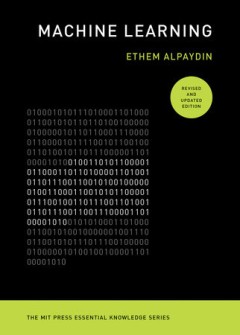
Machine Learning (Revised And Updated Edition)
"An updated introduction for generalists to this powerful technology, its applications and possible future directions"--OCLC-licensed vendor bibliographic record.
- Edition
- Revised and updated edition.
- ISBN/ISSN
- 9780262365369
- Collation
- 1 online resource.
- Series Title
- -
- Call Number
- -

Activity-centered design :an ecological approach to designing smart tools and…
The shift in the practice of human-computer interaction (HCI) Design from user-centered to context-based design marks a significant change in focus. With context-based design, designers start not with a preconceived idea of what users should do, but with an understanding of what users actually do. Context-based design focuses on the situation in which the technology will be used -- the activiti…
- Edition
- -
- ISBN/ISSN
- 9780262256223
- Collation
- 1 online resource (xxi, 111 pages) :illustrations.
- Series Title
- -
- Call Number
- -

Advances in large margin classifiers
The concept of large margins is a unifying principle for the analysis of many different approaches to the classification of data from examples, including boosting, mathematical programming, neural networks, and support vector machines. The fact that it is the margin, or confidence level, of a classification--that is, a scale parameter--rather than a raw training error that matters has become a …
- Edition
- -
- ISBN/ISSN
- 9780262283977
- Collation
- 1 online resource (vi, 412 pages) :illustrations.
- Series Title
- -
- Call Number
- -
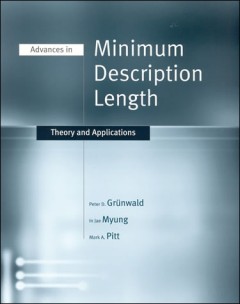
Advances in minimum description length :theory and applications
A source book for state-of-the-art MDL, including an extensive tutorial and recent theoretical advances and practical applications in fields ranging from bioinformatics to psychology.The process of inductive inference--to infer general laws and principles from particular instances--is the basis of statistical modeling, pattern recognition, and machine learning. The Minimum Descriptive Length (M…
- Edition
- -
- ISBN/ISSN
- 9780262274463
- Collation
- 1 online resource (x, 444 pages) :illustrations.
- Series Title
- -
- Call Number
- -
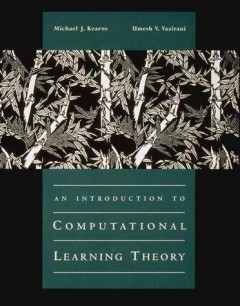
An introduction to computational learning theory
Emphasizing issues of computational efficiency, Michael Kearns and Umesh Vazirani introduce a number of central topics in computational learning theory for researchers and students in artificial intelligence, neural networks, theoretical computer science, and statistics.Computational learning theory is a new and rapidly expanding area of research that examines formal models of induction with th…
- Edition
- -
- ISBN/ISSN
- 0585350531
- Collation
- 1 online resource (xii, 207 pages) :illustrations
- Series Title
- -
- Call Number
- 005 KEA i
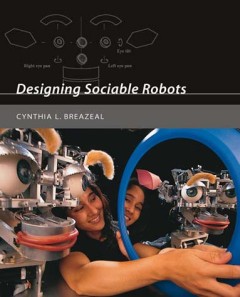
Designing sociable robots
"A Bradford book."Cynthia Breazeal here presents her vision of the sociable robot of the future, a synthetic creature and not merely a sophisticated tool. A sociable robot will be able to understand us, to communicate and interact with us, to learn from us and grow with us. It will be socially intelligent in a humanlike way. Eventually sociable robots will assist us in our daily lives, as colla…
- Edition
- -
- ISBN/ISSN
- 9780262255837
- Collation
- 1 online resource (xviii, 263 pages) :illustrations.
- Series Title
- -
- Call Number
- -
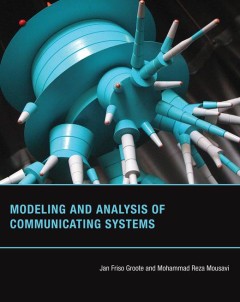
Modeling and analysis of communicating systems
Complex communicating computer systems -- computers connected by data networks and in constant communication with their environments -- do not always behave as expected. This book introduces behavioral modeling, a rigorous approach to behavioral specification and verification of concurrent and distributed systems. It is among the very few techniques capable of modeling systems interaction at a …
- Edition
- -
- ISBN/ISSN
- 0262321033
- Collation
- 1 online resource (xvi, 376 pages) :illustrations
- Series Title
- -
- Call Number
- -

The design of high-efficiency turbomachinery and gas turbines
"This comprehensive textbook is unique in its design-focused approach to turbomachinery and gas turbines. It offers students and practicing engineers methods for configuring these machines to perform with the highest possible efficiency. Examples and problems are based on the actual design of turbomachinery and turbines. After an introductory chapter that outlines the goals of the book and prov…
- Edition
- Second edition, with a new preface.
- ISBN/ISSN
- 0262325802
- Collation
- 1 online resource (xxix, 593 pages) :illustrations
- Series Title
- -
- Call Number
- -

Interface
In this book, Branden Hookway considers the interface not as technology but as a form of relationship with technology. The interface, Hookway proposes, is at once ubiquitous and hidden from view. It is both the bottleneck through which our relationship to technology must pass and a productive encounter embedded within the use of technology. It is a site of contestation -- between human and mach…
- Edition
- -
- ISBN/ISSN
- 9780262322621
- Collation
- 1 online resource
- Series Title
- -
- Call Number
- -
 Computer Science, Information & General Works
Computer Science, Information & General Works  Philosophy & Psychology
Philosophy & Psychology  Religion
Religion  Social Sciences
Social Sciences  Language
Language  Pure Science
Pure Science  Applied Sciences
Applied Sciences  Art & Recreation
Art & Recreation  Literature
Literature  History & Geography
History & Geography